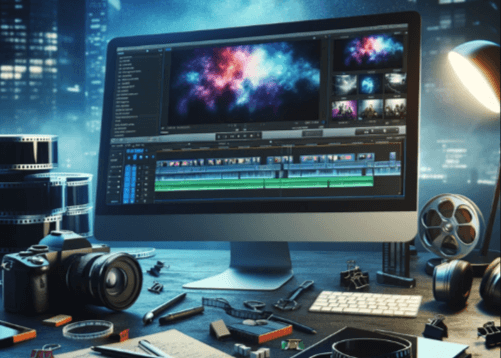Creating Cinematic Looks in Your Videos: A Guide

The pursuit of a cinematic look in your videos is not merely about high-end equipment; it demands a nuanced understanding of various filmic principles. By mastering elements such as lighting, composition, and color grading, you can elevate your visual storytelling to new heights. Consider how camera settings, particularly frame rates, can significantly influence the viewer’s perception. As we explore these essential techniques, the question arises: what specific methods can you employ to transform your footage into a compelling visual narrative?
Understanding Cinematic Aesthetics
Understanding cinematic aesthetics is essential for anyone looking to elevate their video production, as it encompasses a myriad of visual elements that contribute to the overall storytelling experience.
Through the use of visual symbolism, filmmakers can convey deeper meanings and emotions, enhancing cinematic storytelling.
Techniques such as composition, color grading, and framing work harmoniously to create a rich visual tapestry that captivates audiences and evokes profound responses.
Mastering Lighting Techniques
Lighting serves as a fundamental pillar in shaping the cinematic quality of video production, directly influencing the mood, tone, and visual narrative.
By harnessing natural light alongside artificial sources, filmmakers can master lighting ratios that enhance shadow control and mood setting.
Utilizing practical effects further elevates the scene, allowing for a dynamic interplay of light and shadow that captivates the audience’s imagination.
Composition Essentials
Effective composition is often the backbone of visually compelling storytelling in video production.
Mastering framing techniques, such as the rule of thirds and leading lines, helps guide the viewer’s eye and evoke emotion.
By thoughtfully arranging elements within the frame, you enhance visual storytelling, creating a dynamic narrative that resonates.
Embrace freedom in your creativity while adhering to these compositional principles for impactful videos.
Color Grading Tips
Color grading transforms the visual narrative of your videos, enhancing mood and atmosphere through the careful manipulation of hues and tones.
Utilize diverse color palettes for mood enhancement, ensuring that color contrast accentuates key elements.
Employ film emulation techniques for an organic feel, while maintaining a balanced tonal range.
Effective color correction is essential, allowing for seamless integration of these elements to achieve captivating cinematic looks.
Camera Settings for Cinematic Shots
While achieving a cinematic look is often associated with post-production techniques, the foundation begins with the right camera settings.
Select a frame rate of 24 frames per second to evoke the filmic aesthetic. Pair this with prime lens choices, favoring wider apertures for shallow depth of field.
This combination enhances storytelling, creating immersive visuals that draw viewers into your narrative world.
Conclusion
In conclusion, achieving a cinematic look in video production requires meticulous attention to lighting, composition, and color grading. According to a study by the American Society of Cinematographers, films shot at 24 fps are perceived as more aesthetically pleasing, enhancing viewer engagement by up to 30%. This statistic underscores the significance of frame rates in creating a filmic aesthetic. By integrating these elements effectively, filmmakers can produce visually captivating narratives that resonate emotionally with audiences.





